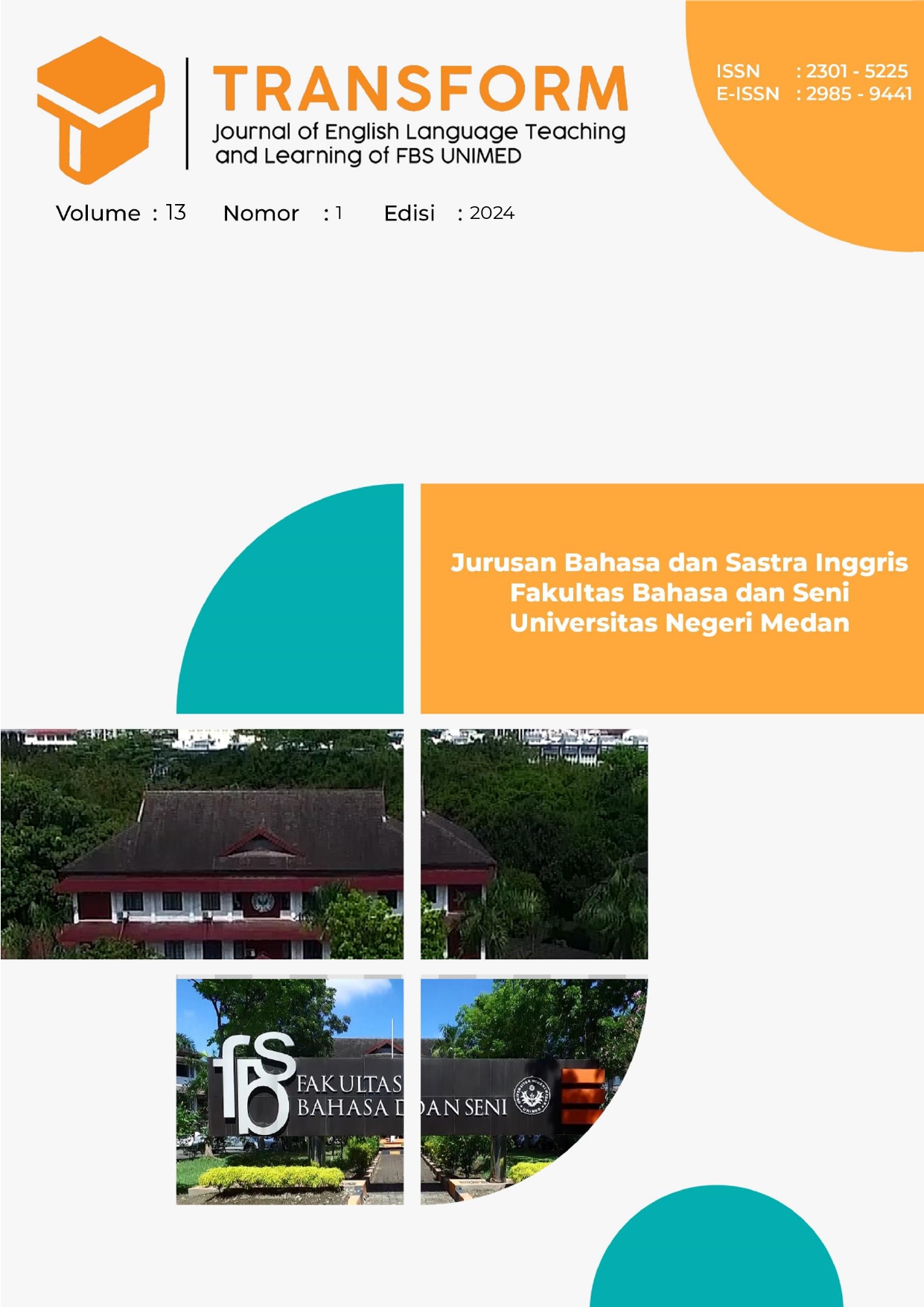Taboo And Swear Words in Heartbreak High Series
DOI:
https://doi.org/10.24114/tj.v13i1.60205Keywords:
Heartbreak High Series, Sociolinguistics, Swear words, Taboo WordAbstract
This study aims to identify the types of taboo and swear words and analyze their realization by the main characters in the Heartbreak High Series. This study utilizes a descriptive qualitative method, extracting data from the series, in the form of utterances, dialogues, and conversations that contain taboo and swear words. The findings revealed that four types of taboo words found in the Heartbreak High series realized by the main characters: lavatory (28%), private parts of the body (11%), religion (9%), sexual activity (43%), with an additional (9%) that does not align with Swan™s theory (1995). Additionally, this study categorizes swear words in the series into two categories. First are strong swear words, and second is weak swear words. Strong swear words consist of exclamations of annoyance (17%), exclamations of surprise (8%), exclamations of unconcern (2%), insults (33%), insulting request to go away (9%), emphasize an emotion (25%), surprise question (5%) and violent refusal/rejection (1%). Weak swear words consist of exclamations of annoyance (18%), exclamations of surprise (46%), and exclamations of emotion (36%). The emotional conditions of the main characters while using the swear words are joy, surprise, sadness, anger, fear, and hatred.References
Adillah, S. (2022). An analysis of taboo words uttered by male and female characters in Bad Boys for Life movie: A gender study (Doctoral dissertation, Universitas Islam Negeri Maulana Malik Ibrahim).
Akmajian, A., Demmers, R.A., Farmer, A.K., & Harnish, R.M. (1998). Linguistics: An Introduction to Language and Communication. 4th Ed. London: The MIT press.
Anggita, F. N. (2015). A sociolinguistic analysis of taboo words in bad teacher movie. Sastra Inggris-Quill, 4(1), 62-69.
Asheva, A. J. (2022). A Socio-Pragmatic Study of Politeness Strategies and Social Contexts in Joker Movie. Jurnal Bahasa, Sastra, Dan Studi Amerika, 28(2), 67. https://doi.org/10.20961/jbssa.v28i2.63811
Auer, P. (1998). Code-Switching in Conversation: Language, interaction and identity. London: Routledge.
Barrett, L. F. (1985). The concept of emotion: Folk and scientific. American Psychologist, 40(2), 123-136. doi: 10.1037/0003-066X.40.2.123
Bourdieu, P. (1991). Language and Symbolic Power. Cambridge, Polity.
Chaika, E. 1982. Language the Social Mirror. Massachusetts: Newbury House Publishers, Inc.
Chrystal, D. (2003). The Cambridge Encyclopedia of The English Language Second Edition. Cambridge University Press.
Eckert, P. (2000). Linguistic Variation as Social Practice: The Linguistic Construction of Identity in Belten High. Massachusetts-USA: Black Well
Garaga, J., Darboe, L., Ousainou, K., & Ebrima, C. (2022). An Analysis of Taboo and Swear Words in Ted 2 Movie. International Journal of Social Science and Humanities Research, 10(1), 50-59.
Hancock, Beverley, Elizabeth, O., Kate, & Windridge. (2009). An Introduction to Qualitative Research. National Institute for Health Research.
Komang, D. A. A., & Ketut, S. (2021). Swearing and Taboo Words by the Main Character in I, Tonya Movie. Journal of Language and Literature, 4(1), 1-14.
Lambert, W. E., Hodgson, R. C., Gardner, R. C., & Fillenbaum, S. (1960). Evaluational Reactions to Spoken Languages. The Journal of Abnormal Social Psychology, 60, 44-51. http://dx.doi.org/10.1037/h0044430
Mansoor, I. K. (2019). Politeness: Linguistic Study. Internasional Journal In Social Sciences And ¦, 8(4), 167“179.
Nordquist, R. (2020). What Are Swear Words and What Are They Used For? Thought.Co. https://www.thoughtco.com/swear-word-term-1691888
Putri, D. E., & Barnabas, S. (2019). An Analysis of Taboo Words in Rich Brian™s Song Lyrics. Journal of English Education and Teaching, 3(2), 143-155.
Swan, M. (1995). Practice English Usage (New Edition). Oxford University Press.
Vanderstoep, W., S., & Deirdre, D. J. (2009). Research Methods for Everyday Life: Blending Qualitative and Quantitative Approaches. Jossey-Bass.
Yuldashev, A. A. (2022). Language And Culture. Academic research in educational sciences, 3(10), 461-464.
Downloads
Published
Issue
Section
License
Copyright (c) 2024 Abdul Rahim, Fauziah Khairani Lubis

This work is licensed under a Creative Commons Attribution-ShareAlike 4.0 International License.
Authors who publish with this journal agree with the following terms:
- Authors retain copyright and grant the journal right of first publication with the work simultaneously licensed under a Creative Commons Attribution License that allows others to share the work with an acknowledgment of the work's authorship and initial publication in this journal.
- Authors are able to enter into separate, additional contractual arrangements for the non-exclusive distribution of the journal's published version of the work (e.g., post it to an institutional repository or publish it in a book), with an acknowledgment of its initial publication in this journal.
- Authors are permitted and encouraged to post their work online (e.g., in institutional repositories or on their website) prior to and during the submission process, as it can lead to productive exchanges, as well as earlier and greater citation of published work (See The Effect of Open Access).
- This work is licensed under a Creative Commons Attribution-ShareAlike 4.0 International License.

This work is licensed under a Creative Commons Attribution-NonCommercial-ShareAlike 4.0 International License.



